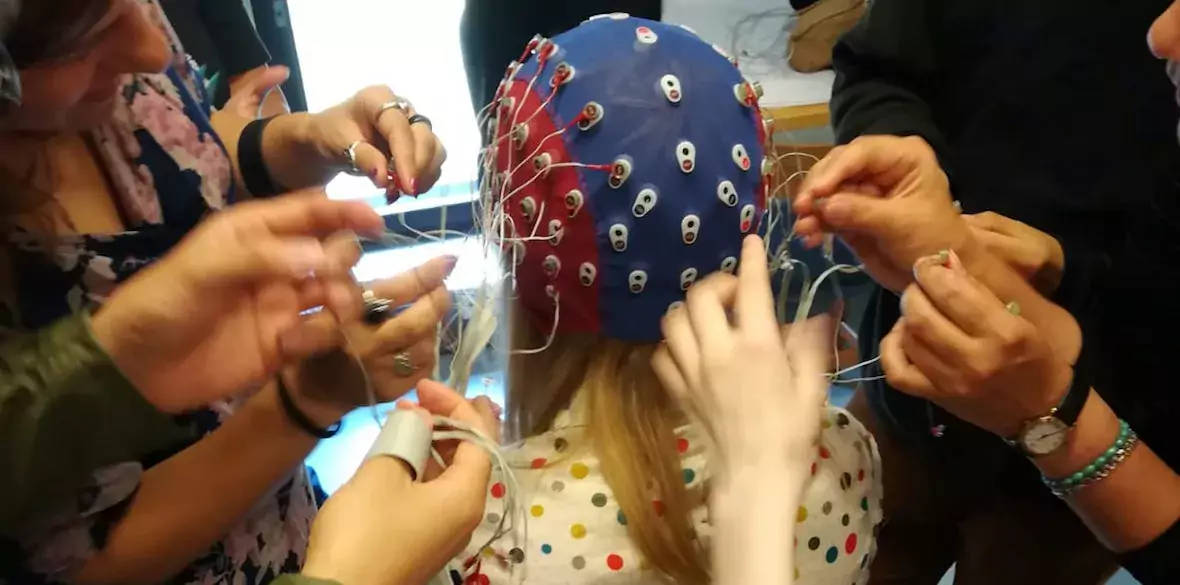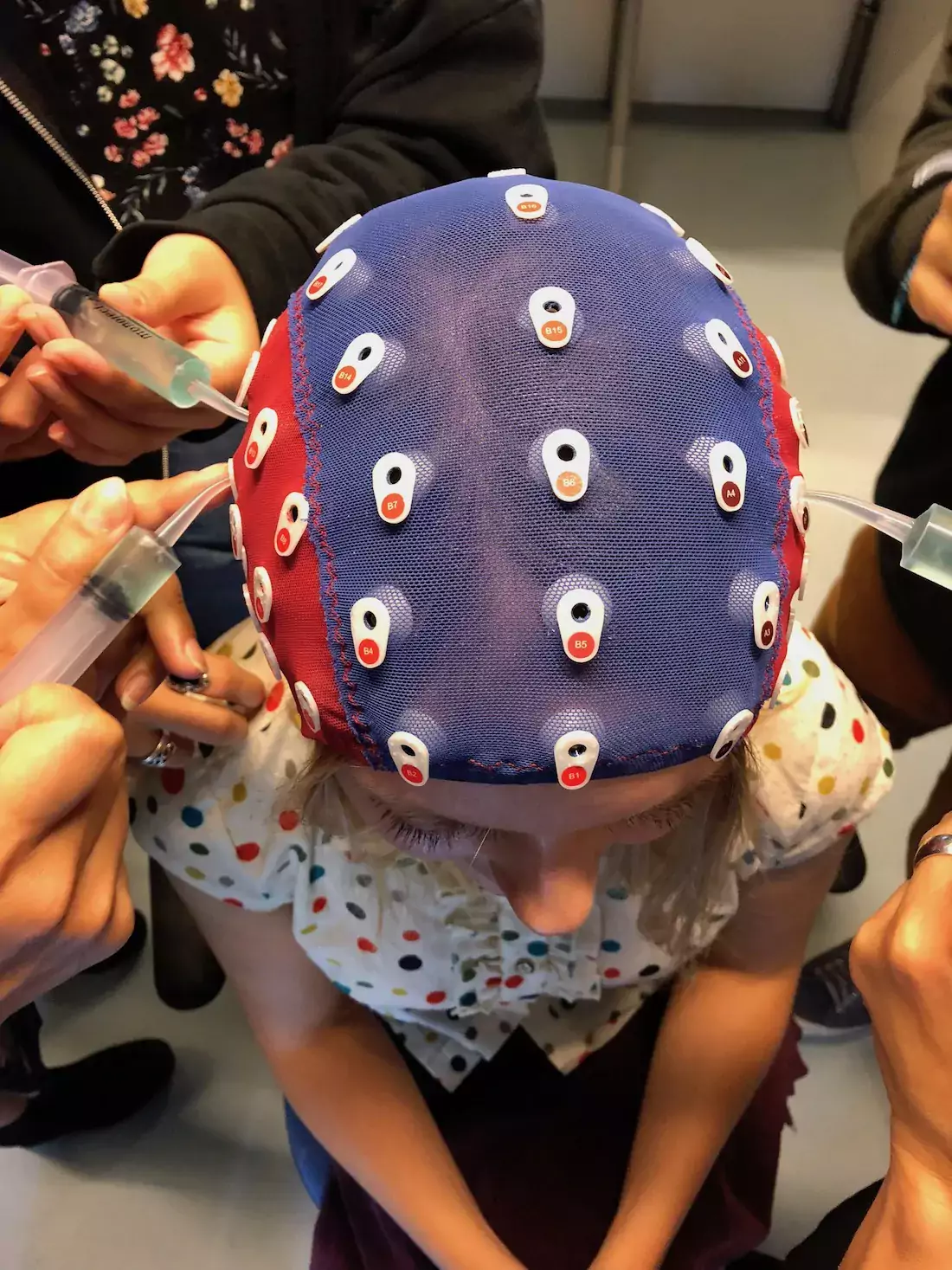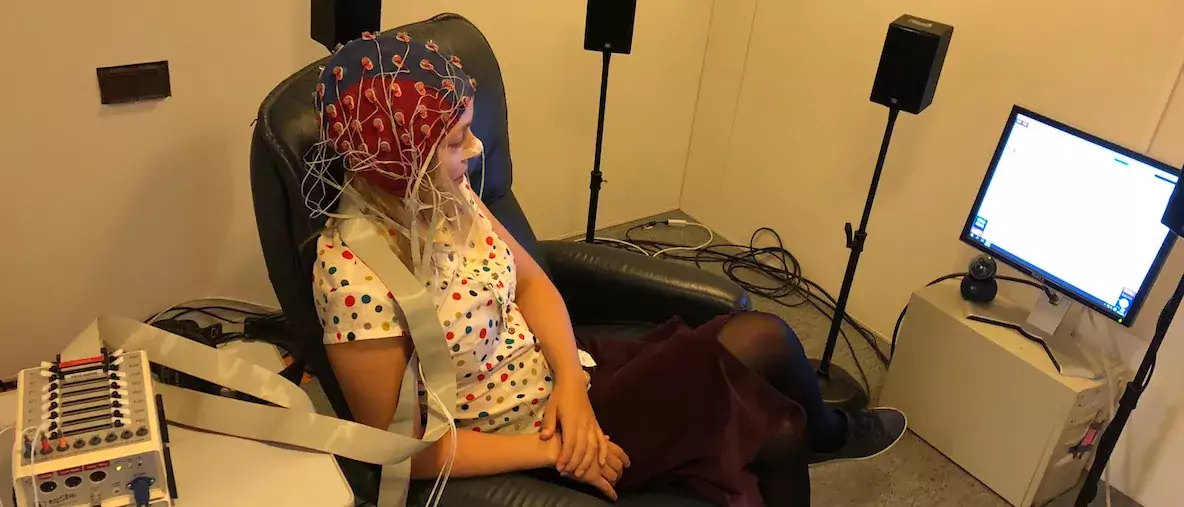21st Century Digital Storytelling is a course organised by the Helsinki Summer School and CICERO Learning for students and professionals around the world, interested about developments in telling stories with digital technologies. The course is informed by the insights we have gained through empirical research in schools and Higher Education. It also brings together perspectives from the socio-technical studies, the social sciences, and media and communication studies. In our classes we discuss with participants types of stories whose characters and accounts of events synthesize narratives of practice, by bringing together heterogeneous elements.
Our visit to the brain research labs at Cognitive Brain Research Unit at the Department and Logopedics on Wednesday August 15, 2018, was a case of such heterogeneity. Brain research uses different epistemologies and methodological approaches from, for instance, the interpretive methods we introduce in the course. And yet, brain research produces its own storytelling. Like it happens with every story, the study of the brain focuses on specific events. In order to avoid a distorted view of why a certain reaction happens, the brain scientist needs to isolate irrelevant elements involved in what is taking place in the brain. Such events are performed by brain cells who, like the characters in a story, transmit pieces of information from one to the other. This type of interaction makes up a multiplicity of events that, through observation, testing and experimentation, the brain researchers put together and construct a meaningful plot.
Here as well, it matters what technologies are used to tell a reliable story of a brain phenomenon. For example, not every measurement device produces error-free results. Like it happens when we need to choose the most appropriate technology to tell a story of suffering, to give an account of an historical phenomenon or enact a drama, the study of the brain relates to aims and purposes. Some questions then that the researcher is called upon to answer include, which software, which version of a program, what computer would be the most appropriate for an initial or a later phase of the experiment?
Like authors do when in the process of putting narratives together, researchers deal with different forms of uncertainty, cognitive scientist Nella Moisseinen explains to us during the visit. ‘We come up with representations that we combine in a mathematical way’, Nella adds, when we point out that the narrative in brain research also uses multimodal and analytical methods (e.g., coding, categorisation, comparison etc.) to draw safe conclusions.
As for the beginning of a new brain study, when the new story starts is very much a matter of perspective. A new perspective sets the ground for a new research initiative to come forward and further develop the narrative in the field.


